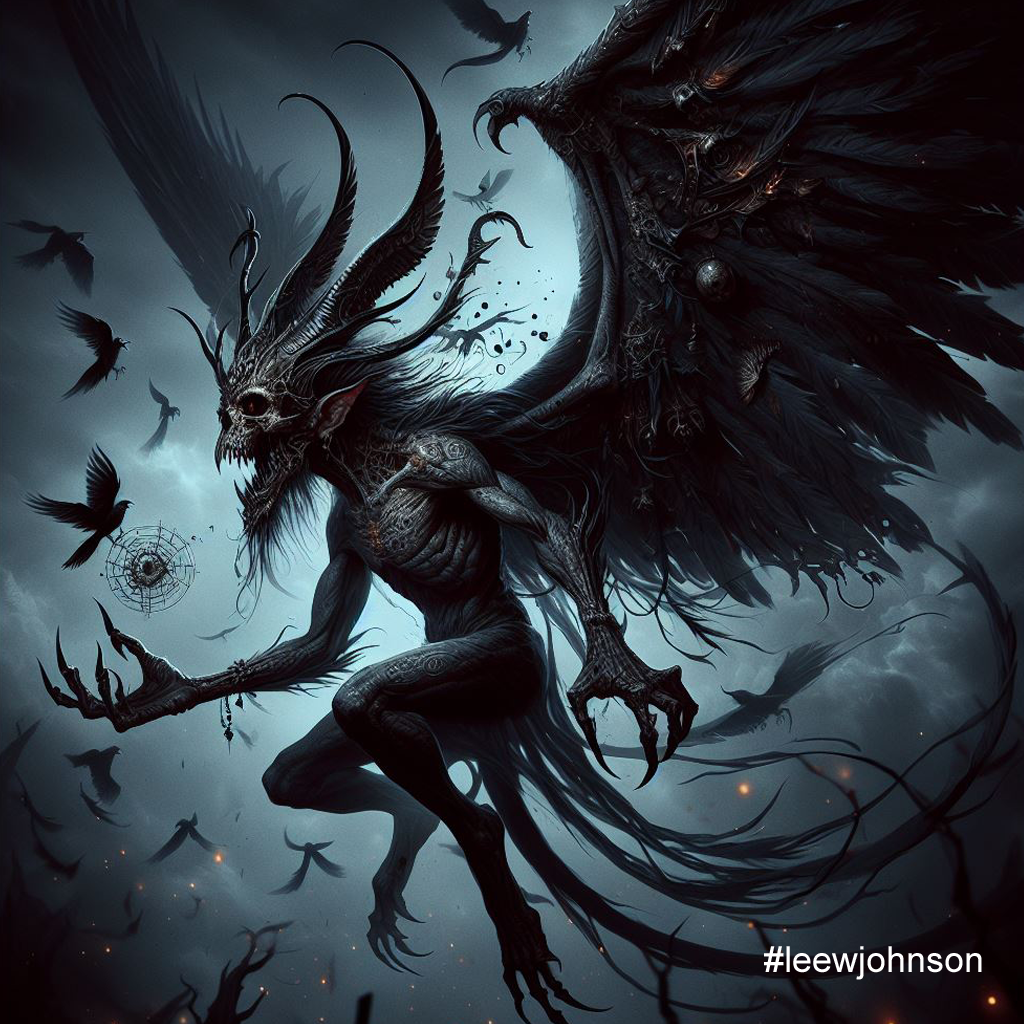Beelzebub

Correspondences:
Names: Beelzebuth, Belzebuth, Ba’al Zebub, Beelzebul and probably associated with Baal and Bael.
Direction: Northeast; North
Planet: Jupiter
Date: June 21 (Summer Solstice)
Metal: Titanium
Country: Africa
Season: Autumn
Crystals: Moldavite, Dendritic Opal, Obsidian, Smoky Quartz
Element: Air, Earth, Earthy Part of Air
Color: Muted Dark Red, Black, Grey, Brown, Silver and Blues, Yellow
Incense: Frankincense, Sweet Tobacco, Myrrh, Oud
Other: Alcohol, Tobacco, False Unicorn Root
Enn: Adey vocar avage Beelzebuth
The Dictionnaire Infernal describes Beelzebub as a being capable of flying, known as the “Lord of the Flyers” or the “Lord of the Flies”
The source for the name Beelzebub is found in the Books of Kings (2 Kings 1:2–3, 6, 16), where it is written as Baʿal zəvuv (Ba’al Zebub), referring to a deity worshipped by the Philistines in Ekron. Interestingly, this Biblical story is about the King of Judah, Ahaziah, who had fallen and was injured. He sent messengers to Ekron to consult Ba’al Zebub. Elijah was then sent by his god to tell the King that because there is no god in Israel (i.e. the god of the Bible), which is why he is going to consult the god in Ekron, then he will die in his bed. You can really feel the overwhelming compassion from this god. No chance of this god saying, “Don’t trouble your men, I am here and I will heal you.” Just a god throwing his toys out of the cot and having a tantrum.
Anyway, the title Baal (“Lord”) is used in conjunction with a descriptive name of a specific god, usually that being Baal the Canaanite god. Opinions differ on the exact meaning of the name, but it has been suggested that it could be translated literally as “lord of (the) flies”, or as some have suggested, “Lord of flying things.”
The Hebrew Scriptures, particularly the Old Testament, later adapted the name into Beelzebub, often portraying him as a demonic figure associated with idolatry and false gods. In the New Testament, Beelzebub appears as a prince of demons, synonymous with Satan himself, representing the epitome of evil and temptation.
To get a better idea of who Beelzebub is, we should probably look to Baal/Ba’al. Some will suggest that these two entities are entirely different, but I tend to follow the thread that suggests they are the same, Ba’al being the Semitic origin of Beelzebub or Ba’al Zebub.
To start with, we need to look at the most widely used of Baal’s epithets, “Rider (or Mounter) of the Clouds” which is referenced in Psalms 68 verse 5. This gives an interesting insight into the translation of “Lord of the Flies”. It is possible that it is this Rider of the Clouds which has changed “Lord of the Flies” to “Lord of Flying Things”. Of course many people still relate Beelzebub to flies and pestilence. I think there is a lot more to Beelzebub.
We do however have a possible connection with him being the “Lord of Flies’ in that Ugaritic records show him to be a weather god, having a particular association with lightning, wind, fire and fertility, and therefore possibly indicating a role in averting or controlling swarms of insects that plagued agricultural lands, i.e. Lord of the flies, or insects, in a positive sense as opposed to the negative connotation and attention that he seems to draw.
Generally speaking the use of the Northwest Semitic term ba’al or the feminine ba’alah, much like the Sumerian use of the term En, denoted a lord, or lady, and was not specific to anything, unless an epithet was used to signify ownership as it were. The word ba’al appear about 90 times in the Hebrew Bible in reference to various gods. This is very similar to the use of Lucifer. It is simply a title, and there are many of them.
However, coming back to his association with the Canaanite weather and agricultural god, we also find an association with him being a chthonic sprit, passing into the Underworld during the dry summer seasons and coming back to the land with autumn rains to replenish the earth.
What is also interesting is, if you track the story of the Ba’al of Ugarit, the epithet of Hadad or HadadBa’al being the storm god that defeated the Sea Serpent Lotan, who is also equated with Leviathan, we see parallels to the story of Thor and Jorgamundr.
It is also this fertility aspect which causes people nowadays to work with Beelzebub for financial gain and money magic. This aspect of being a Dameon that can be worked with for business ventures is something that I have taken on myself. Beelzebub is one of the five Daemons that I worked with when creating the spirit of wealth within The Egregore Project. Connolly also suggests this in association with Beelzebub. In The Daemonolator’s Guide to Daemonic Magick she lists Beelzebub or Beelzebuth as being the Lord of Lords and used in rituals for “money, prosperity and luck”.
In addition to that, we also have Jehannum mentioning that he “is knowledgable concerning biology and it is his office to incite innovation. He is apt for rites of banishing, execration, healing, cleansing, and death magick.
“Beelzebuth rules over indulgence, ambition, authority, the rise and downfall of men of stature, bravery, knowledge, sodomy, power, aeonic progression, prosperity, luck, murder, bellicosity, war, self-assurance, magick, and money. He can impart wisdom and insight to the witch and help her find her soulmate.”